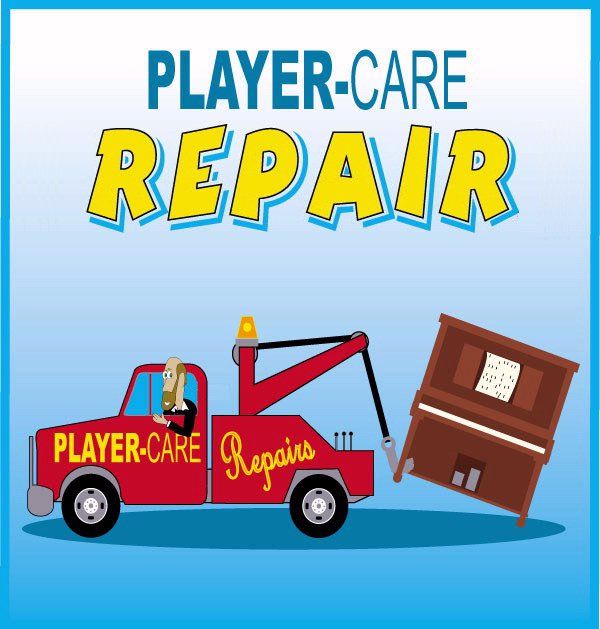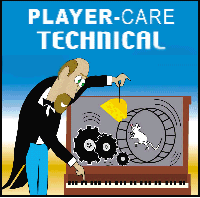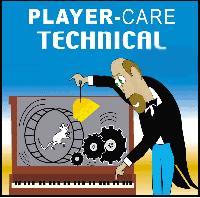
|

|

|

|

|

|
| Home | Manuals | Supplies | Search | Consult | Contact | Testing | Service |


Understanding |
|
it works fine. Why doesn't it work with the foot pumps? There are just too many variables in this question to answer it definitevly in a single article. Check the stack all by itself. And try to keep in mind the fact that the vacuum cleaner produces significantly more vacuum (or air flow) than the foot pumps. Here's an insight. Each pump of the foot pumps -one pedal- is very similar to one full quick inhale of your lungs in terms of air flow. When all the valves are closed and the trackerbar is closed, the "air flow" in the stack should be close to ZERO. Naturally, the "vacuum level" has to be sufficient to keep the valves sealed, but that level shouldn't be any higher than seven inches, which is easily produced by your lungs. (That's why I test the stack by mouth.) As valve leakage increases, the 'vacuum level' needed to keep the valves sealed doesn't change BUT the amount of 'air flow' needed to achieve that level increases in direct proportion to the amount of leakage. For many people, this is one of the hardest concepts to grasp. The reason it's difficult to understand is that most people equate vacuum level with the pressure required to pull on something or seal something. And, while it's true that sucking harder on a coke bottle, and covering the top with your tongue, produces a tighter seal, what they forget is that the coke bottle is 100% air-tight. So, you can just as easily create a seal at two inches of vacuum as you can at 20". Once you throw a 'leak' into the equation, you can no longer create an air-tight seal. It's impossible! The best you can do is create the semblance of a seal. So, while the 'vacuum pump' may be capable of producing a higher level of vacuum in an air-tight environment, the only thing the leaky valves care about is the amount of air required to create the semblance of a seal. In other words, it's more about air flow than it is about vacuum level. Here again, what many people fail to consider is that when you suck harder, you're actually moving the same amount of air at a faster rate. (Consider again the coke bottle. In order to create more 'suction', you have to cover the top of the bottle with your tongue faster -before the vacuum 'leaks' out.) An example I use to drive this point home is that if you apply 90" of vacuum to a player piano through a 1/4" hose, the player won't work at all. If you apply that same 90" of vacuum through a 2" hose, you can suck a 1-15/16" steel ball through the hose fast enough to put a dent in sheet metal. (Try it with a good shop vacuum.) And, that's possible because there's a vast amount of air doing the work and air has density. The point is, you can't pass enough air through the 1/4" hose, regardless of the vacuum level, to seal all 88 valves. There's just not enough air flow. So, when people tell me that their player works great with a vacuum cleaner but hardly at all with the foot pumps, all I can say is, "Well, you've got lots of leakage." Realistically speaking, most player pianos have a 1" to 1-1/2" (inside diameter or 'ID') vacuum supply hose, and most foot pump assemblies are capable of producing a maximum of about 30" of water vacuum (WC). Also understand that the vacuum pressure that the foot pumps are capable of producing is only limited by (a) how air-tight the assembly is, and (b) how hard you can press on the pedals before something breaks. However, the amount of 'air flow' that the assembly is capable of producing is limited only by how fast you can pump the pedals. The typical vacuum cleaner has a 1-1/4" ID hose. For comparison, understand that the human lungs have a capacity of about six litres of air, or 1-1/2 gallons (346.5 cubic inches). A 9" x 15" bellows with an operating span of 5" bellows has an inside area of 337.5 cubic inches. So, one full breath with your lungs is about equal to one full pump of one of the foot pumps. Also, while most people can create over 150" of vacuum with their mouth, they can only create about 20" of vacuum with their lungs. (I can create over 180 inches with my mouth but only 25 inches with my lungs.) The point is, a person should be able to suck in enough air in one breath to operate a player piano for a second or two. On the other hand, a vacuum cleaner operating with a 1-1/2" hose (or the size of the opening in the top of the vacuum pump motor), can suck in upwards of 95 cubic feet of air per minute. That's 1728 cubic inches times 95, or 164,160 cubic inches per minute, or 2736 cubic inches per second. So, you can see that if you pumped the foot pedals at a rate of one pump per second (think about that....) you could create the same amount of air flow as the vacuum pump produces in a little over 1/10th of a second. As you can see, it should come as no surprise that a vacuum cleaner can get a player piano to work even if the foot pumps can't get it to do anything. I like to say to people that, "Using a vacuum cleaner to power a player piano is like using jet fuel to power your car." And, while it might work for awhile, your car won't last very long if it's powered with jet fuel. Likewise, the player mechanism won't last very long if it's powered by an uncontrolled vacuum cleaner. However, a properly controlled vacuum pump can make even a leaky player work without damaging the system. See: Electric Vacuum Pump Kit |

![]() ..To
The Top of this Page . . . . . . . . . . .
..To
The Top of this Page . . . . . . . . . . . ![]() ..To The HOME Page
..To The HOME Page
|
Since "Player-Care" is an internet business, I prefer that we correspond via E-Mail (click here to fill out the 'Request Form'). However, if I'm not in the middle of some other activity, you can reach me at 732-840-8787. But please understand that during the hours from 8AM-5PM EST (Mon-Sat), I'm generally quite busy. So, I probably won't answer the phone. If you get the answering machine, please leave a detailed message stating the reason for your call. Also, repeat your name and phone number clearly and distinctly. By necessity, I prioritize everything in my life. And, if you call and just leave your name and number, and ask me to call you back, it might be a day or two before I return your call. Why? Because I don't know why you want me to call and I might not be prepared to assist you in an effective and efficient manner. If you leave me an E-Mail address (which I prefer), spell it out phonetically. The more you do to help me, the more I can help you in return. Don't rush. You have four minutes to record your message. |
|
407 19th Ave, Brick, NJ, 08724 Phone Number 732-840-8787 (Voicemail Only, No Texts) |
